15.06.2022
Ariane 6 launch debut pushed into 2023
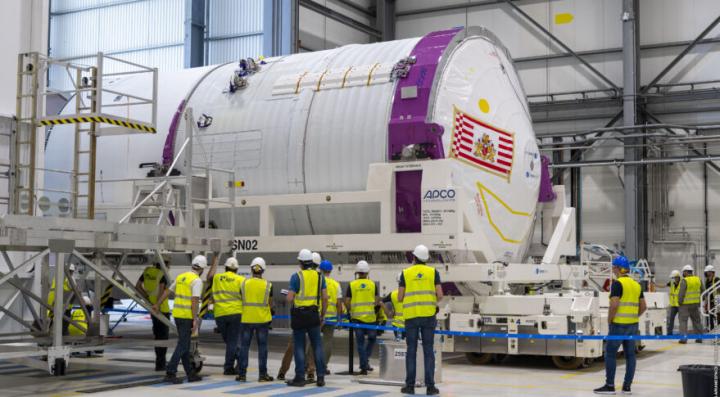
TAMPA, Fla. — The maiden flight for Ariane 6 that had been slated toward the end of 2022 is now targeting next year, European Space Agency Director General Josef Aschbacher said June 13.
Aschbacher said Ariane 6 is set to fly “some time” in 2023 during a BBC interview without giving a reason for the delay.
Just a few weeks ago, a senior executive for Arianespace said it was preparing to conduct the inaugural launch toward the end of 2022 from Europe’s spaceport in Kourou, French Guiana.
Arianespace referred questions to ESA, which did not immediately respond to requests for comment.
Ariane 6 had previously been scheduled to debut in 2020 before suffering multiple delays following the COVID-19 pandemic.
The next-generation launcher comes in two versions: Ariane 64 with four boosters and Ariane 62 with two. They are designed to replace Europe’s heavy-lift Ariane 5 and the medium-lift Soyuz rocket sourced from Russia, respectively.
Arianespace expects to deploy satellites for Europe’s Galileo navigation constellation with Ariane 6 in the mission that follows its inaugural launch.
Ariane 6 commercial customers include Viasat and Amazon’s Project Kuiper megaconstellation.
Europe is also developing a successor to Vega, its small launch vehicle, called Vega C.
According to an ESA media invitation June 7, Arianespace is due to conduct Vega C’s inaugural launch July 7 at 7:13 a.m. Eastern from Kourou.
Giulio Ranzo, CEO of Italian rocket maker Avio that is Vega’s prime contractor and a subcontractor for Ariane 6, discussed development timelines for both launchers in a recent SpaceNews interview.
Aschbacher also said during the BBC interview that Europe has still “not decided what will happen or [what] will be the future” of the ExoMars rover mission it had shared with Russia.
He said ESA is “working with NASA to see whether they could be a partner on this mission,” after suspending cooperation with Russia in March in response to Russia’s invasion of Ukraine.
However, he stressed that a decision had not been made on how to proceed with the scientific mission.
ExoMars was previously set to launch in September on a Russian Proton rocket, and use a landing platform from Russia to deliver the ESA-built Rosalind Franklin rover to the surface of Mars.
Speaking at a May 3 meeting of NASA’s Mars Exploration Program Analysis Group (MEPAG), Jorge Vago, ExoMars project scientist at ESA, said he doubted a new lander could be ready by 2026 and that he believed the rover’s launch would be delayed to at least 2028.
Quelle: SN
----
Update: 23.06.2023
.
First view of Ariane 6 on launchpad
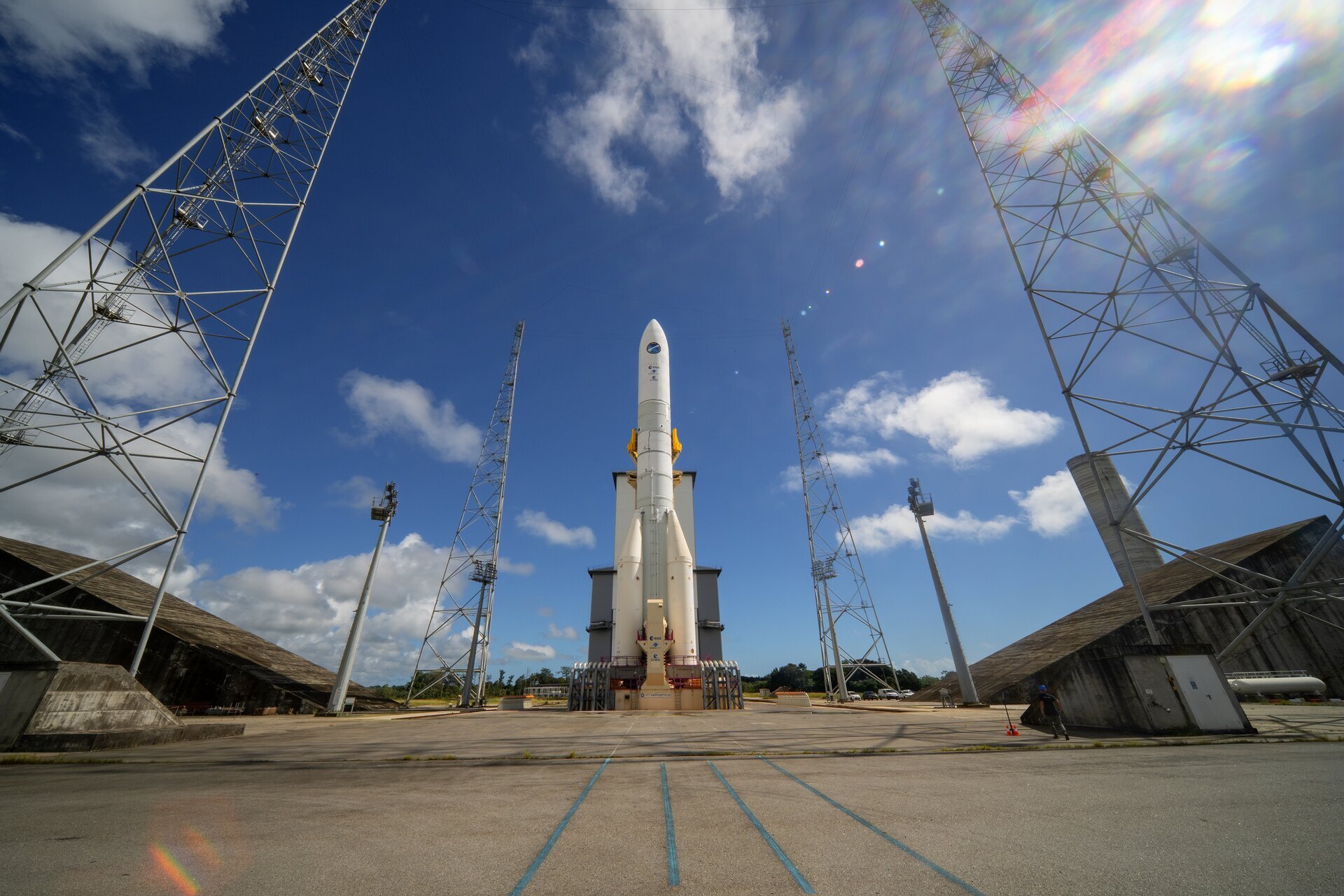
ESA’s new Ariane 6 launch system is being prepared for a round of engine fire tests – with removal of the mobile building that protects the rocket while it sits on the launch pad at Europe’s Spaceport in French Guiana.
As seen in this image taken on 22 June 2023, the doors of this mobile gantry have been opened and the structure rolled back on rails.
The operation, which takes about half an hour, was a trial run in preparation for a series test firings of the Vulcain 2.1 engine. These test firings will be conducted on the launch pad as part of ongoing preparations for the first-ever flight of Ariane 6.
Removing the gantry for the first time – and then returning it – also helped validate the Ariane 6 ground infrastructure.
The Ariane 6 rocket visible here is not intended for flight. It is being used to check assembly procedures, electrical and fuel connections, telemetry, etc. Flight models, including the rocket that will make Ariane 6’s inaugural flight, are being built in Europe and integrated by prime contractor Ariane Group. After shipping to French Guiana, Ariane 6 core and upper stages are assembled horizontally, before being transferred to the launch pad and lifted upright inside the gantry, where the solid-fuel boosters and payload are attached. The horizontal assembly method cuts the time and cost of a launch campaign, and is a first for an Ariane rocket.
Ariane 6 is an essentially all-new design, to succeed Ariane 5 as the heavy-lift vehicle in Europe’s stable of launch systems. This autonomous capability to reach space is only possible because of the hard work and dedication of thousands of talented people, an entourage that we call ‘Space Team Europe’.
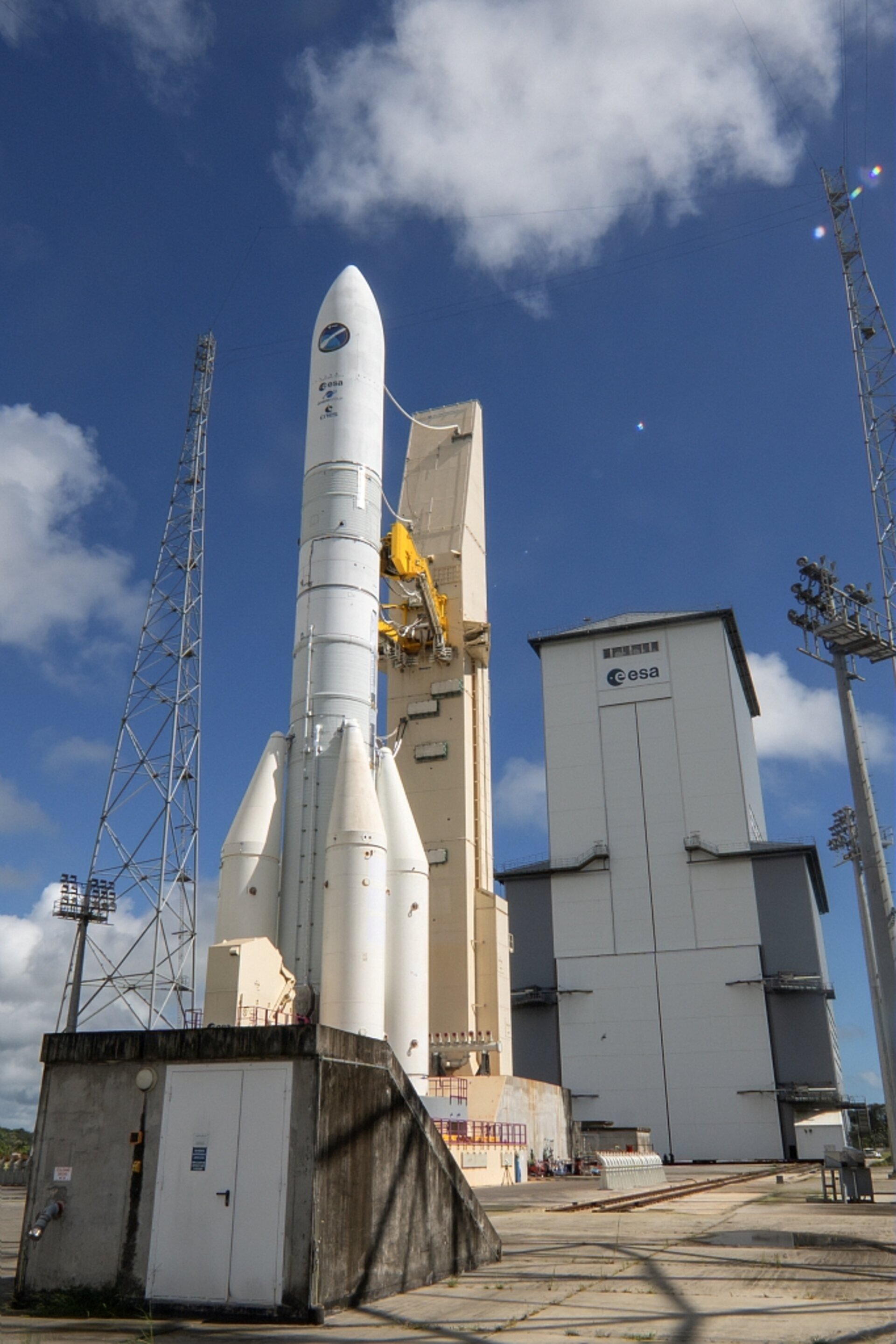
Ariane 6 - Test Removal of Mobile Gantry at Europe's Space Port in Kourou, French Guiana on 23 June 2023
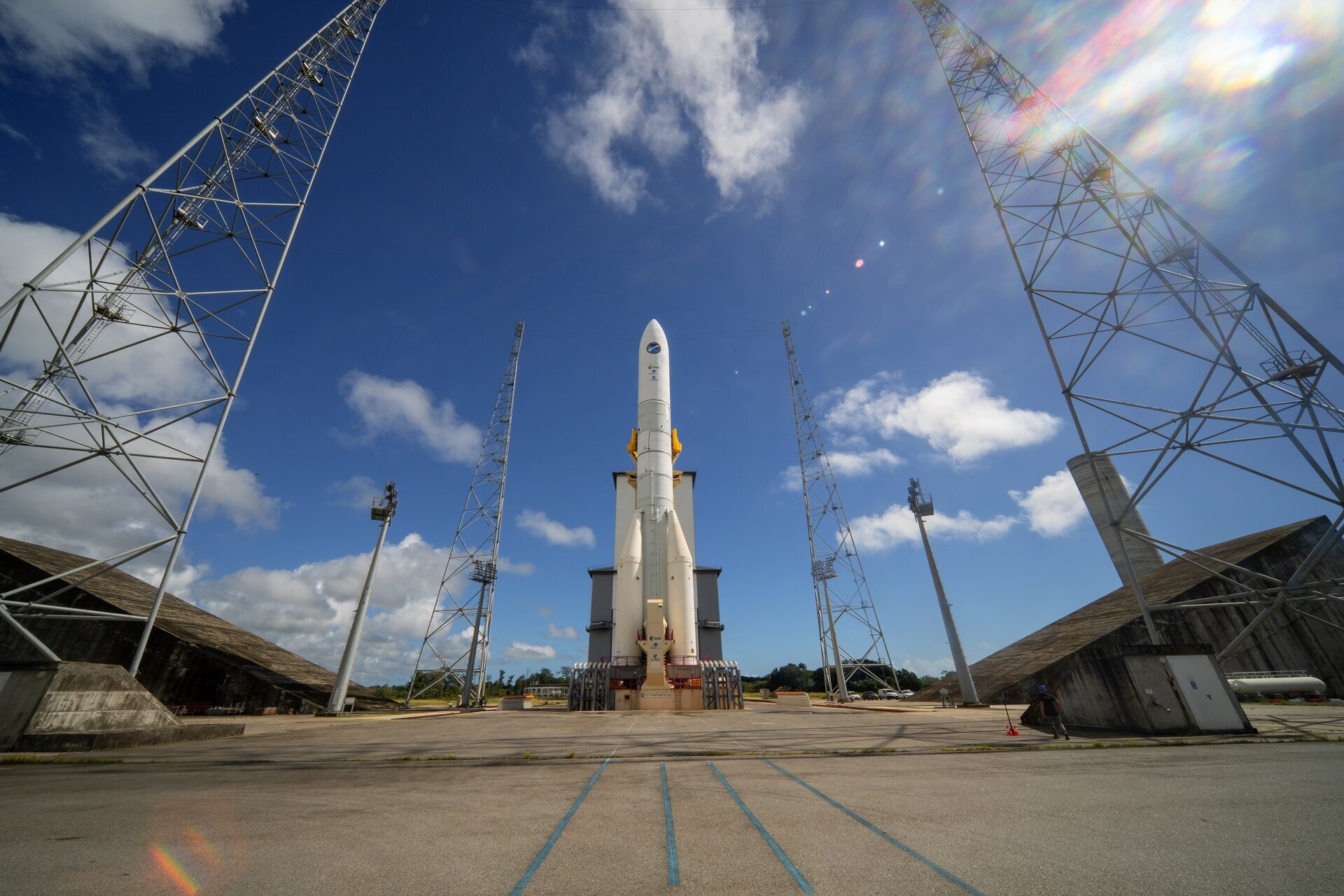
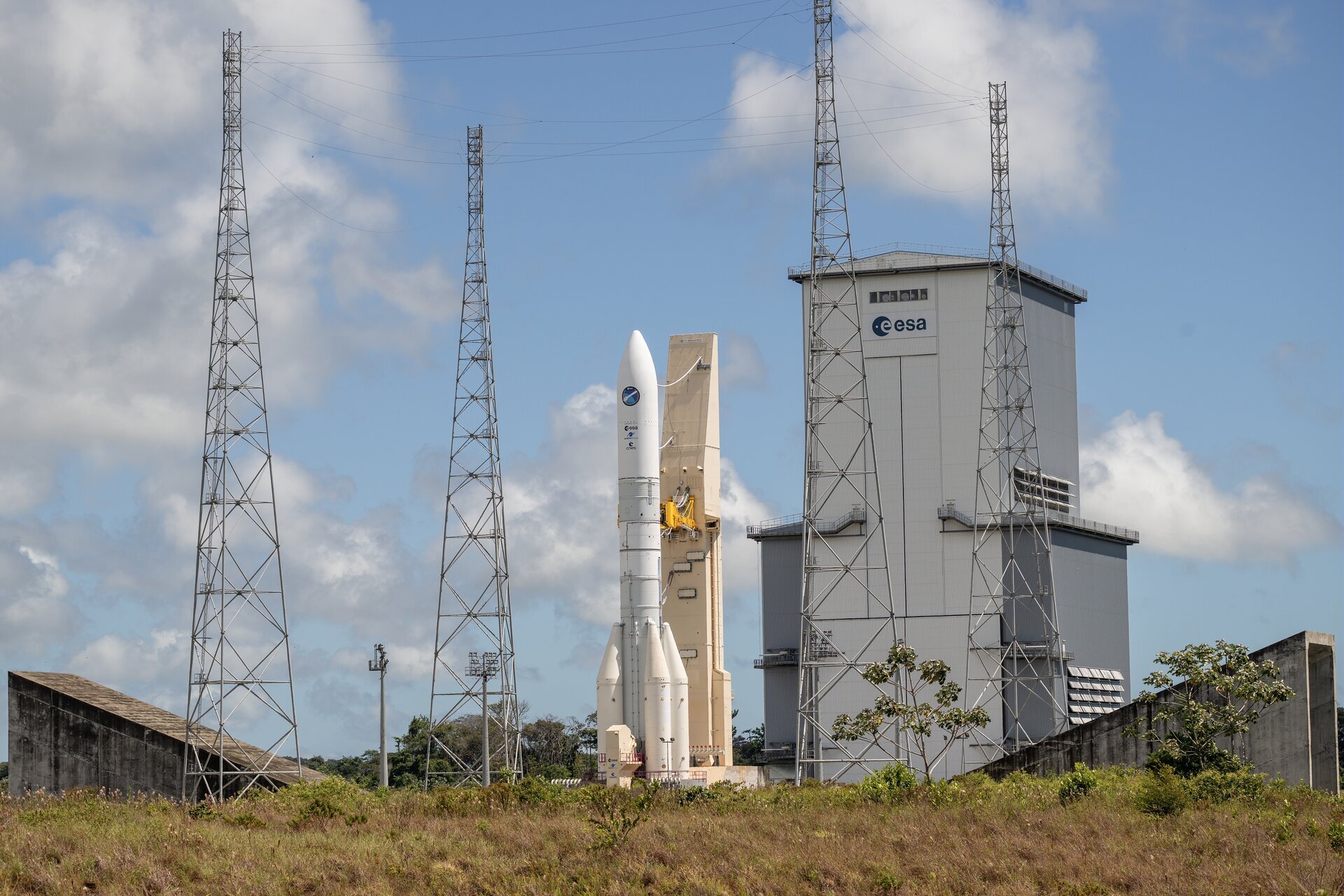
Quelle: ESA
----
Update: 31.10.2023
.
Nighttime rehearsal for Ariane 6 towards first flight
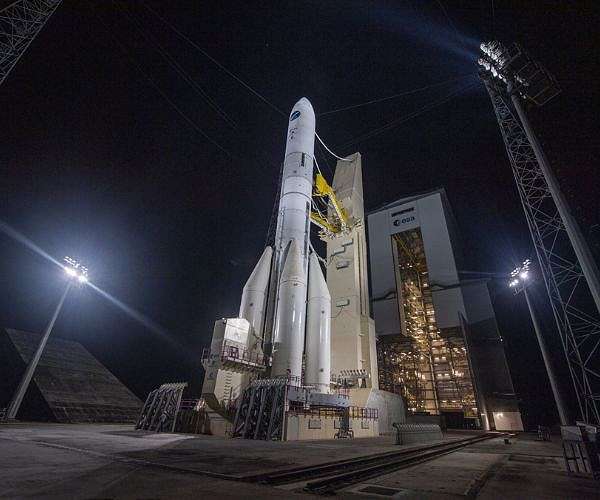
The wet rehearsal - called combined test loading, abbreviated to CTLO2.1 - is the third time the Ariane 6 ground teams have practiced a full launch countdown, after a first rehearsal on 18 July and a first ignition of the main engine on 5 September. This time, the operations were performed at night to test operations in cooler ambient temperatures, while the July and September tests were run in daylight.
Yesterday, a team of CNES, ESA, Arianespace and ArianeGroup personnel at Europe's Spaceport in Kourou, French Guiana, completed a full-scale wet rehearsal of the new Ariane 6 rocket that was fuelled and then drained of its fuel. The test lasted over 30 hours with three teams working in shifts of 10 hours each.
The goal was to increase the robustness of the launch system and to test emergency safety procedures with an interruption of the countdown from simulated anomalies.
The wet rehearsal - called combined test loading, abbreviated to CTLO2.1 - is the third time the Ariane 6 ground teams have practiced a full launch countdown, after a first rehearsal on 18 July and a first ignition of the main engine on 5 September. Yesterday's test concentrated on system robustness and how well Ariane 6 and the teams handle situations at the edge of the operational parameters. This time, the operations were performed at night to test operations in cooler ambient temperatures, while the July and September tests were run in daylight.
"The whole team performed this CTLO2.1 countdown to near perfection," exclaims Jean-Michel Rizzi, ESA Ariane 6 launch base manager, "it was a very long operation but the dedicated teams and efforts put in achieved a complete success, bravo to everybody involved."
Cold liquid fuel - and lots of it
Ariane 6 uses liquid oxygen and hydrogen as its fuel to power into space. These power-dense liquids are great fuels but need to be chilled to extreme temperatures below -250 C, making them hazardous to work with. At these temperatures the liquids will instantly expand if it heats up and can cause condensation or even ice on the rocket as it cools down in the surrounding tropically humid air.
Ariane 6 tanks hold 180 tonnes of propellant, which is why fuelling and then draining operations take so long - it took over seven hours to drain the liquid hydrogen from its tanks alone. Engineers are constantly adapting flow rate and monitoring temperatures, pressure in the tanks and pipes, and the ground systems underground pipelines that extend through hundreds of meters to transport the fuel to the rocket.
The core stage of the Ariane 6 now standing on its launchpad is identical to the real thing, but it is not meant to leave Earth. The rocket boosters are inert as they use solid propellant and don't require fuelling, but the rest is the real deal - including the Vinci upper stage that would only fire its engines once separated from the core stage in space. The fuelling of the upper stage is also included in all rehearsals.
"We prepare for a launch, or in this case a rehearsal, many days in advance," says Tony dos Santos, ESA's Ariane 6 ground systems operations manager at Kourou, "the ground tanks where we store the liquid hydrogen and oxygen need to be replenished, the launchpad needs to be primed and prepared: it's an all-hands operation working in shifts that is a major collective effort involving teams from ESA, CNES, Arianegroup and Arianespace based on both sides of the Atlantic, both in Les Mureaux, France, and Kourou."
"This night-time rehearsal allowed the teams to practice loading the rocket with fuel when the temperature outside is lower - without the tropical sunlight shining on the Ariane 6 tanks the fuel inside behaves noticeably different and we need to consider and accommodate for condensation and ice formation."
Rehearse for launch
"As these operations are so delicate, and Ariane 6 is an all-new launch system, the more rehearsals we can do, the better, because we need to explore the robustness of the systems." explains Pier Domenico Resta, ESA's Ariane 6 launch system and engineering manager, "Through simulations of off-nominal situations the CTLO 2.1 has given the operational teams more confidence in launch countdowns and more test data for analysis and smooth operations to liftoff."
After this successful rehearsal, the next major test will turn up the heat: a full eight-minute firing of the Ariane 6 rocket's main engine that would normally propel the rocket and its passengers into space. For this test, scheduled before the end of November, the Ariane 6 test model will continue to stay firmly fixed to the ground.
"We are working all out to get Ariane 6 off the ground and looking forward to see it rise from the launchpad soon," concludes Pier Domenico.
Quelle: SD
